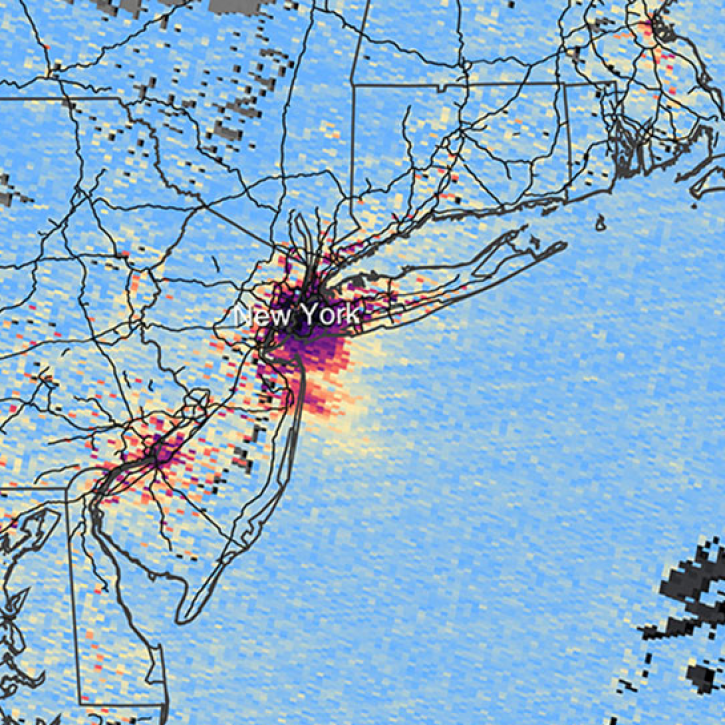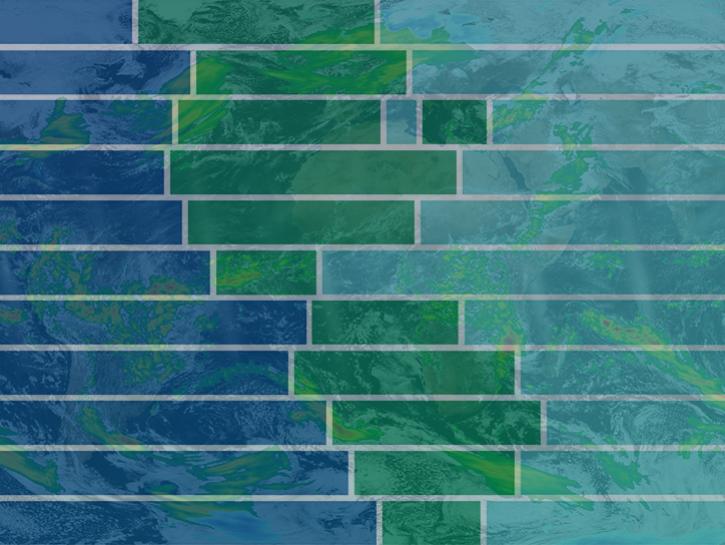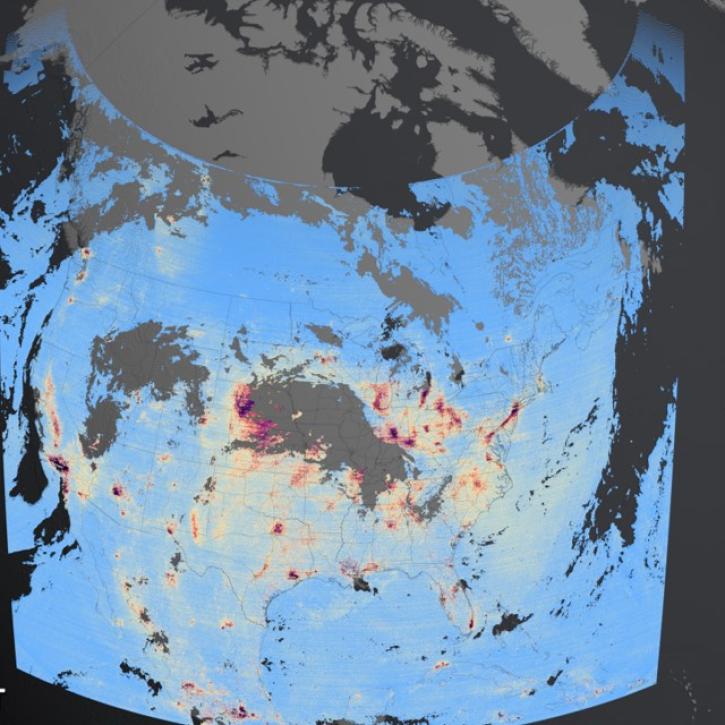We are in the process of migrating all NASA Earth science data sites into Earthdata from now until end of 2026. Not all NASA Earth science data and resources will appear here until then. Thank you for your patience as we make this transition.
Read about the Web Unification Project
Trace Gases/Trace Species Data Access and Tools
NASA has trace gases/trace species datasets that help researchers characterize the makeup of the atmosphere. Access a range of data and data tools such as AppEEARS, FIRMS, and Giovanni to make the most of trace gases/trace species data.
Many NASA observation methods—platforms, instruments, and space geodesy techniques—provide data that improve our understanding of trace gases, including NASA's Tropospheric Emissions: Monitoring Pollution (TEMPO) instrument, featured below.
Table of contents
Trace Gases/Trace Species Datasets
| Dataset | Platforms | Instruments | Temporal Extent | Location Keywords | Data Format |
|---|---|---|---|---|---|
| ACT-America: L2 In Situ Atmospheric Gas Concentrations from Flasks, Eastern USA | B-200, C-130 | FLASKS | 2016-05-27 to 2019-07-27 | MID-LATITUDE, WESTERN HEMISPHERE, UNITED STATES OF AMERICA | multiple |
| ACT-America: L3 Merged In Situ Atmospheric Trace Gases and Flask Data, Eastern USA | C-130, B-200 | CPL, FLASKS, PICARRO L2130-i Flight Ready Water Vapor Isotopic Analyzer, OMI, PICARRO G2401-mc CO2, CH4, CO, H2O INSTRUMENT, CAMS | 2016-07-11 to 2019-07-27 | MID-LATITUDE, UNITED STATES OF AMERICA, WESTERN HEMISPHERE | multiple |
| ACTIVATE Falcon In Situ Trace Gas Data | HU-25A | GAS SENSORS, CRDS | 2020-02-14 to 2022-06-30 | NORTH AMERICA, UNITED STATES OF AMERICA, ATLANTIC OCEAN, NORTH ATLANTIC OCEAN, BERMUDA | ICARTT |
| ACTIVATE FLEXible PARTicle (FLEXPART) Dispersion Model Back-trajectories | FLEXPART | Computer | 2020-02-14 to 2022-06-30 | NORTH AMERICA, UNITED STATES OF AMERICA, BERMUDA, ATLANTIC OCEAN, NORTH ATLANTIC OCEAN | |
| Airborne Observations and Modeling Comparison of Global Inorganic Aerosol Acidity | NSF/NCAR C-130, MODELS, WP-3D ORION, NASA DC-8 | SPECTROMETERS, Computer | 2006-01-01 to 2017-08-01 | GLOBAL | multiple |
| AIRS/Aqua L2 Near Real Time (NRT) Support Retrieval (AIRS-only) V006 (AIRS2SUP_NRT) at GES DISC | Aqua | AIRS | 2016-10-15 to Present | GLOBAL | |
| AIRS/Aqua L2 Near Real Time (NRT) Support Retrieval (AIRS-only) V006 (AIRS2SUP_NRT) at GES DISC | Aqua | AIRS | 2016-10-15 to Present | GLOBAL | |
| AMAZE-08 Aerosol Characterization and Meteorological Data, Central Amazon Basin: 2008 | LABORATORY, FIELD SURVEYS | LOPC-PMS, MASS SPECTROMETERS, CNC, AEROSOL/CLOUD PARTICLE SIZER | 2008-02-05 to 2008-04-21 | CSV | |
| Aqua/AIRS L2 Near Real Time (NRT) Support Retrieval (AIRS-only) V7.0 at GES DISC | Aqua | AIRS | 2002-08-30 to Present | GLOBAL | |
| Aqua/AIRS L2 Near Real Time (NRT) Support Retrieval (AIRS-only) V7.0 at GES DISC | Aqua | AIRS | 2002-08-30 to Present | GLOBAL |
Featured Trace Gases/Trace Species Observation Method: TEMPO
The Tropospheric Emissions: Monitoring Pollution (TEMPO) instrument is a high-resolution, visible and ultraviolet light spectrometer aboard the Intelsat 40e platform. TEMPO monitors major air pollutants, such as ozone and nitrogen dioxide, across North America every daylight hour.
Videos from NASA’s Scientific Visualization Studio reveal the brilliant view from the agency’s newest pollution-detecting sensor.
6 MIN READ
This Satellite Needs Working Group solution aims to provide an hourly sulfur dioxide (SO2) concentration product and additional trace gas measurements from the Tropospheric Emissions: Monitoring Pollution (TEMPO) mission.
This webinar provides an overview of the TEMPO mission and its data products and shows how to discover and access TEMPO data products using NASA's Earthdata Search.
This Satellite Needs Working Group solution aims to provide hourly near real-time (NRT) air quality products using Tropospheric Emissions: Monitoring Pollution (TEMPO) and Geostationary Operational Environmental Satellite (GOES) data.
Frequently Asked Questions
Earthdata Forum
Our online forum provides a space for users to browse thousands of FAQs about research needs, data, and data applications. You can also submit new questions for our experts to answer.
Submit Questions to Earthdata Forumand View Expert Responses

